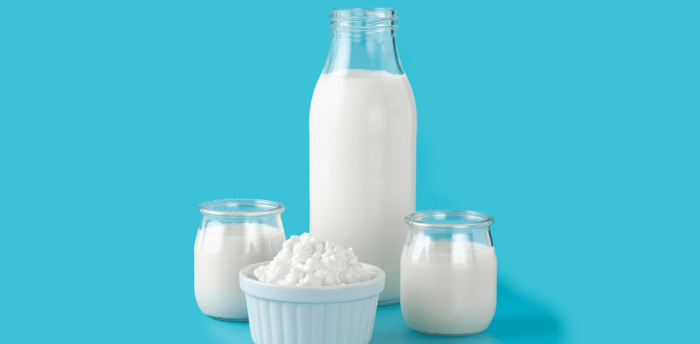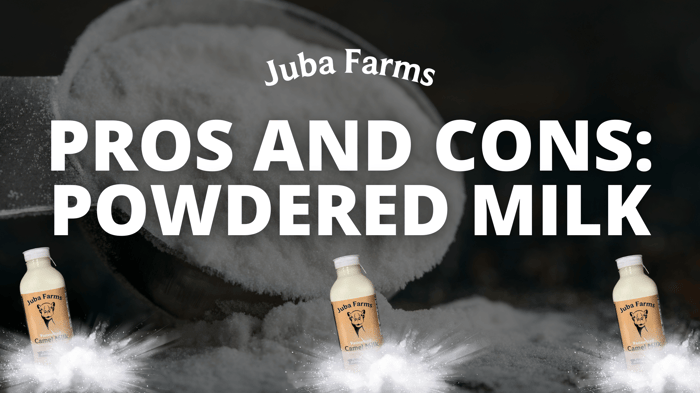Table of Contents
- Myth 1: Camel Milk Tastes Bad
- Myth 2: Camel Milk Is Just a Trend
- Myth 4: Camel Milk Can Cure Diseases
- Myth 6: Camel Milk Causes Diarrhea
- Myth 7: Camel Milk Gets Sourced Only Outside the U.S.
- Myth 8: Camel Milk Has No Scientific Backing
- Myth 7: It’s Too Expensive to Be Worth It
- Myth 8: Camel Milk Isn’t Suitable for Kids
- Myth 9: It’s Hard to Find Camel Milk in the U.S.
- Camel Milk Facts Summary
- Final Thoughts
There’s been a surge in interest around camel milk lately, and with it comes a flood of information—some true, some not so much. From miracle health claims to comparisons with cow milk, the internet is full of conflicting opinions. So, what should you believe? I’ve been digging into the real camel milk facts to help set the record straight.
Whether you’re a first-time buyer, a health-conscious parent, or just curious about alternatives to cow milk, this guide will walk you through the truth about camel milk—no hype, just facts.

Myth 1: Camel Milk Tastes Bad
The Truth:
Taste is subjective, but camel milk is often described as slightly sweet, light, and a bit salty. It has a clean, mild flavor that many people prefer over goat milk.
Camel milk has a smooth, slightly salty taste and lacks the high sugar content found in other milk, resulting in a less sweet flavor. Most people describe it as tasting like regular milk.
Texture: Creamy, similar to 2% milk.
Culinary Uses: Works well in coffee, smoothies, desserts, and savory recipes.
The taste also depends on freshness, storage, and the animal’s diet. Taste is subjective, but camel milk is often described as slightly sweet, light, and a bit salty. It has a clean, mild flavor that many people prefer over goat milk.
The taste also depends on freshness, storage, and the animal’s diet. Raw camel milk tends to have the freshest flavor, while pasteurized or powdered versions may taste slightly different.
Myth 2: Camel Milk Is Just a Trend
The Truth:
Camel milk has been consumed for centuries in parts of Africa, the Middle East, and South Asia. It’s not a new discovery; it’s a traditional food with deep cultural roots. What’s new is its availability in the U.S. and Europe and the growing interest in its nutritional profile. Here is the camel milk facts: Although it’s trending today, this powerful superfood has been cherished worldwide for centuries.
Camel milk is often used by nomadic communities for hydration, nutrition, and sustenance in arid regions—hardly a fleeting trend.
Myth 4: Camel Milk Can Cure Diseases
The Truth:
This is where things get tricky. While there’s ongoing research into how camel milk may support health, especially in the areas of immunity and digestion, it is not a cure for any disease.
Some early studies and anecdotal stories link camel milk to improved symptoms in conditions like autism, diabetes, and gut disorders—but these are not conclusive.
Camel milk should be viewed as a nutritious food or supplement, not a substitute for medical treatment. Always talk to a healthcare provider before making any dietary changes for medical purposes.
Myth 6: Camel Milk Causes Diarrhea
The Truth:
This is a common concern, but it's often due to improper introduction or overconsumption. Like with any new food, especially dairy, introducing camel milk slowly is key.
For some individuals, especially those with sensitive digestive systems or lactose intolerance, camel milk may cause mild stomach upset if consumed in large quantities at first. However, many people find it gentler than cow milk once their body adjusts.
Myth 7: Camel Milk Gets Sourced Only Outside the U.S.
The Truth:
While camel milk does have origins in the Middle East, Africa, and parts of Asia, it is also produced here in the United States. At Juba Farms, we source our milk from FDA-licensed U.S. dairy farms that adhere to the highest standards of processing and operations.
Supporting domestic camel farms helps promote sustainability, freshness, and greater control over production methods.
Myth 8: Camel Milk Has No Scientific Backing
The Truth:
Camel milk has been the subject of numerous scientific studies. Research has explored its nutritional composition, digestive benefits, and its role in supporting immune function.
While more large-scale studies are needed, early research supports many of the traditional claims made by communities that have relied on camel milk for generations.
Peer-reviewed articles in journals such as Emirates Journal of Food and Agriculture and Journal of Dairy Science have examined camel milk’s unique peptides, vitamins, and enzymes.
Myth 7: It’s Too Expensive to Be Worth It
The Truth:
Camel milk can be more expensive than cow milk, but the price reflects the challenges of production. Camels produce less milk, and they have longer gestation periods.
However, many consumers find value in the product due to its nutritional benefits and digestibility. You’re paying for a specialized product that’s not mass-produced—and for some, that’s worth the cost.
Buying in bulk or powdered form (if available) can also help reduce the cost per serving.
Myth 8: Camel Milk Isn’t Suitable for Kids
The Truth:
Camel milk can be a part of a child’s diet, especially for those who are sensitive to cow’s milk. However, it should be introduced slowly and with pediatric guidance.
It’s not a breastmilk replacement, but it can be a nutritious addition for older children when consumed alongside a balanced diet.
Always choose milk that is labeled safe for human consumption and follow age-appropriate serving sizes.
Myth 9: It’s Hard to Find Camel Milk in the U.S.
The Truth:
Thanks to growing demand, camel milk is becoming increasingly accessible in the U.S. You can find it at specialty grocery stores, online retailers, and directly from farms like Juba Farms.
Juba Farms offers 100% pure camel milk at the best prices in the U.S., guaranteed. Whether you’re looking for lightly pasteurized or raw options, they deliver high-quality milk straight to your door. Thanks to growing demand, camel milk is becoming increasingly accessible in the U.S. You can find it at specialty grocery stores, online retailers, and directly from farms like Juba Farms.
You can choose from raw, lightly pasteurized, or frozen forms, depending on your preferences and local laws.
Camel Milk Facts Summary
To wrap it up, here are the real camel milk facts worth remembering:
It’s lower in lactose and often easier to digest than cow milk.
It’s free of common allergenic proteins found in other dairy.
It contains beneficial nutrients like vitamin C, iron, and healthy fats.
It’s not a medical treatment, but it is a nourishing food.
It’s rooted in tradition and now gaining recognition worldwide.
Final Thoughts
Camel milk may not be a miracle cure, but the facts speak for themselves. With its unique nutritional profile and growing research support, it deserves consideration as a serious player in the alternative dairy market.
As always, the key is to make informed decisions. If you’re curious, start with a small amount and see how your body responds.
Caanaha Geela dhalada ah ee Beeraha (16 oz)

$39.00
$48.00
Soo Bandhigida Beeraha Juba ee Caano Geel Saafiya: Dahab Dareere ah oo Dabiiciga ah Beeraleyda Jubba, waxaan ku hanweynahay in aan soo bandhigno wax-soo-saarkayaga saxiixa ah, 100% Caano Geel oo saafi ah. Elixir-kan aan caadiga ahayn wuxuu bixiyaa faa'iidooyin caafimaad… read more








